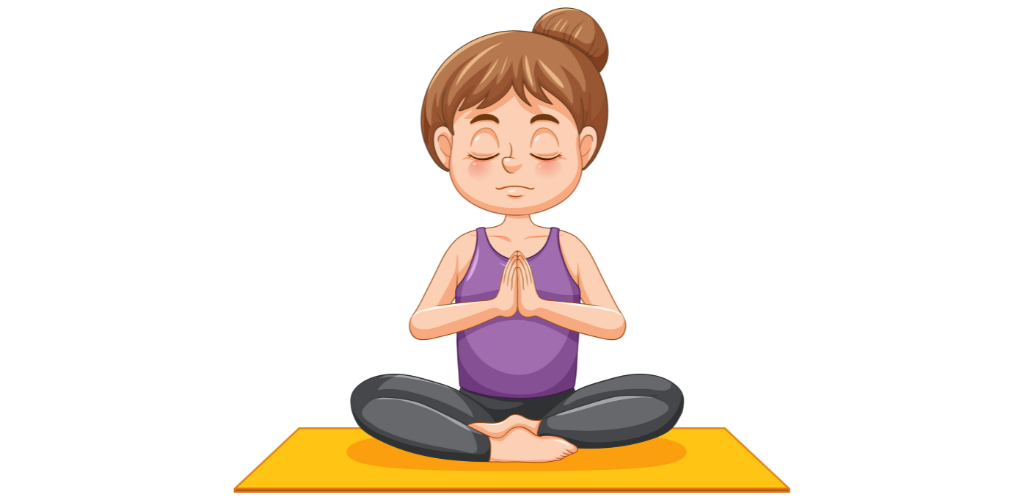Introduction
Yoga, an Indian word that means joining or uniting the mind with body and soul, is a natural and healthy way to keep fit. It helps us to relax our body by calming our minds and gives strength to the whole being. Practising it brings many physical benefits like increased blood circulation, better sleep patterns, prevents numerous health conditions etc. Holistic benefits include happiness, peace of mind and a happy life.
One can practice it in all three stages of life, namely kids, teens and adults. However, while choosing a type of yoga based on age, one needs to know a few things to avoid any problems.
Yoga in the school curriculum
The importance of fitness and meditation is learnt at an early stage by including it into the school curriculum. Our increasingly fast-paced lifestyle, lack of time and other priorities pester us around the clock, creating stress, leading to various disorders.
Most of the schools are now having it as a part of the compulsory curriculum. This is beneficial for both the physical and mental health of the children. Many pieces of research are conducted on the importance of fitness and in schools to boost the kid’s energy level and relaxation and wellness.
Benefits of yoga practiced in school

There are various mental and physical benefits of physical exercise and practicing in school.
- Firstly, school is good for the self-discipline of the children. It teaches kids to control their minds and body to keep their thoughts focused on a specific task at hand. This helps them stay calm under any pressure or stress related to their school life or life apart from school.
- Secondly, it is suitable for keeping the body in shape. These practices help tone up muscle strength, which reduces fat deposition. It also keeps the kids solid and healthy, emphasizing the importance of fitness in students.
- Thirdly, school is perfect for maintaining a balance between mental as well as physical exercise. This will help keep the child’s health reasonable or better than before they started practicing yoga, which will improve their overall performance in various fields.
- Fourthly, children who are already involved in sports or have an inclination toward it can do yoga to improve their performance.
- Fifthly, students going through a challenging phase can concentrate on one of the many asanas which will help them get through that phase of life.
- Sixthly, yoga in school is perfect for the overall personality development of the child. It helps them concentrate and focus on their performance better than ever before.
- Finally, yoga plays an essential part in keeping children fit and healthy. This will, in turn, help them grow up to be more productive members of society shortly.
These are essential characteristics of a successful individual who can succeed at work and on a personal front, proving the importance of fitness in our lives.
Benefits of physical exercise and yoga.

Yoga can help improve:
- Concentration levels.
- Building self-esteem.
- Meditation, along with yoga, is also suitable for improving their mental peace and health.
- Yoga is also suitable for focusing the mind and developing a positive attitude towards life.
- Yoga helps everyone practising it to learn about patience, tolerance, perseverance and self-control.
- It can help them in overcoming fears.
- Decompresses spine – Some of us sit for too long at a stretch without taking breaks. The spinal cord starts to get compressed, leading to stiffness and back pains. The postures (asanas) in yoga help the body decompress, soothe the spinal cord and realign it.
- Breathing exercise – Yoga teaches breathing techniques that can help us prevent heart-related diseases like hypertension, cardiac arrest etc. Respiratory ailments like asthma and cough also reduce with yoga to a great extent.
- Upward and downward asanas – These asanas are beneficial in lowering blood pressure, reducing stress and can also be used to strengthen the lower back and anxiety over the benefits of physical exercise.
Conclusion
As you can see, there are many benefits to including yoga in your school’s curriculum. There is a demonstrable increase in empathy and self-awareness among students who practice it regularly, as well as an increase in mental health awareness for teachers and staff members. It would help if you also considered the cost savings associated with providing this service to all grades at once versus delivering these services one quality at a time over several years. Yoga has been shown to be beneficial both physically and mentally, so why not give it a try? Studies have shown that yoga can improve moods, increase concentration levels, reduce stress and anxiety, boost self-esteem and confidence levels, build strength in the body by increasing flexibility or stretching muscles, relieve chronic pain caused by sitting for long periods of time at desks or on the floor during class hours….the list goes on! There are countless reasons why schools should make room for this type of exercise program. I hope you find this blog helpful. Keep reading!
Also Read:
The most important benefits of Yoga for Kids
Teach The Benefits of Yoga To Your Kids, On This World Yoga Day



Speak Your Mind
Save my name, email and website in this browser for next time I comment